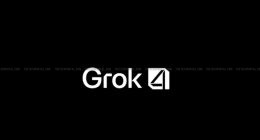Are you a startup wondering how you will find a fitting Chief Technology Officer (CTO) for your organization? Does the prospect of sifting through countless applications and conducting interviews feel overwhelming? Don’t worry. In this article, we will help you break down the necessary steps to streamline the hiring process for you.
1. Create The List of Requirements For CTO
Do you know the analogy of the family going on a road trip to a destination they have never been without a map? There is a high probability they will not get to where they want to go on time. Your list of requirements is your map to help you navigate the hiring process. You have to decide what you are looking for in a CTO. There’s more to it than considering their work experience. It’s about their specific skills and if they are a fit for your company culture.
This checklist should specify three major things;
a. The technical skills
You should consider prioritizing which technical skills are crucial and which ones they have room to learn on the job. To make this list more effective, you can also decide how you will test the skill. Below, you will find an example of a checklist you can use to screen potential candidates’ technical skills.
| Technical skill | Priority | How to interview | Do they have the skill |
| Node.js | High | Give coding test | |
| JavaScript | Medium | Pairing session | |
| React.js | Low | Ask questions |
Table 1: A technical skills requirements checklist
b. Soft skills
This tests the character of the CTO and if they would be a fit for your organization. Some skills to check for include communication, critical thinking, motivation, and integrity. It may not be as easy to test for these skills the same way you would test for technical skills, so you may have to find some workarounds. You can use online guides to help you determine the best way to test for soft skills.
c. Miscellaneous requirements
Sometimes you have additional requirements you need your CTO to meet that are neither technical nor soft skills. For example, if you are looking for an in-house CTO, an obvious requirement is that they can commute to your workstation. This eliminates any candidates that want to work remotely. Another condition may be that they speak a particular language. Interviews are great for testing language efficiency. This list can vary from company to company, depending on their needs.
You can go through the hiring process much faster if you use a requirements checklist as your guide.
Check their work experience
You check the work experience of a potential candidate in two ways. You can ask them questions about their previous work experience and what their responsibilities were. Ask them about the projects they have worked on in the past and their contribution. Additionally, you can ask them about their role in their previous organization.
You can also get in touch with their references and ask any questions you may have. Some organizations set up a minimum work experience cut-off and do not interview candidates who do not meet that threshold. Others are willing to consider candidates who have the necessary skills even if they don’t meet their experience criteria. The choice is up to you.
Decide In-house or Remote CTO
There are many reasons why some organizations choose to outsource CTO roles while others want to hire a CTO full-time. There are advantages and disadvantages to doing either. In the table below, you will find reasons why you would like to choose one over the other.
| Why hire an in-house CTO | Why hire a remote CTO |
| You need a CTO to work full-time with your company. | You do not want to hire a full-time employee. |
| You want to practice hands-on management over your projects. | You want access to a broader pool of CTOs to pick from. |
| You cannot afford to pay an in-house CTO at the current accepted rates in your country. | |
| You do not have the room or the equipment the CTO will need to work. |
Table 2: Why hire an in house CTO vs. a remote CTO
Conduct the interview
There are many types of interviews to pick from, each with advantages and disadvantages. The goal is to choose the type that helps you get the most information out of the candidates quickly. Here are three main types to consider when testing a CTO.
- Pre-recorded interview – This is an excellent alternative to a phone screening interview for three reasons. The first is that after recording, the candidates can do interviews independently, which saves you time. Second, it is easy to review and compare as you have a record of all the interviews. Lastly, you can observe the candidates’ body language, which can tell you more than just their voice.
- Test or assessment interviews – You test the candidates’ specific skills by having them perform the tasks they will be performing with you. This is an easy way to catch a lying candidate.
- Face-to-face interviews – You can choose to have this as the final interview before selecting the candidate you will hire.
Give them an offer they can’t refuse
There is a chance that if you think a particular candidate is up to the task, other companies see that as well. For that reason, you must give the candidate an offer that would make them choose your company over other companies. As a startup, you may be worried that it means you have to pay them a lot of money to choose you. That is not always the case. Some startups offer the potential CTO bonuses and equity to stay with the firm if they cannot afford the current expected salary.
It is always advisable to make your offer during a face-to-face interview. Research the standard compensation rates for CTOs and make them an offer that will make them want to work with you.
Conclusion
Hiring a CTO does not have to be a nightmare. With a bit of preparation, it can be easy to find the right CTO for you. Creating a checklist for your wants and needs is always an excellent place to start, as you will assess all your candidates against your list.



